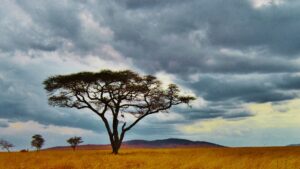
WMO’s 2024 climate report warns of worsening weather extremes, mounting socio-economic toll, and urgent need for digital adaptation and resilience planning across Africa
The climate emergency in Africa has reached a critical tipping point, with cascading disasters impacting lives, livelihoods, and the continent’s development prospects at an alarming pace. The State of the Climate in Africa 2024 report by the World Meteorological Organization (WMO) paints a grim portrait of a region buckling under the weight of extreme heat, deadly floods, prolonged droughts, and widespread humanitarian upheaval.
From failed harvests to paralyzed power grids, and from flooded homes to growing water crises, climate change is no longer a future threat for Africa it is a destructive force in the present, affecting every sector and corner of the continent.
2024: A Year of Broken Climate Records
The year 2024 stands as one of the hottest globally, and the warmest decade for Africa in recorded history. North Africa led the continent’s temperature surge with an alarming 1.28°C rise above the 1991–2020 average, while the entire continent averaged 0.86°C above normal.
Africa’s surrounding oceans also broke new records, with widespread marine heatwaves affecting nearly 30 million square kilometers from January to April. These warming oceans not only threaten marine biodiversity and fisheries but also elevate the risk of coastal storms and rising sea levels, endangering millions living in low-lying communities.
A Continent Caught Between Drought and Deluge
In Southern Africa, countries such as Zambia, Malawi, and Zimbabwe faced their harshest drought in decades. Cereal yields dropped by nearly half, and the Kariba Dam, Africa’s largest reservoir, reached critical lows crippling hydropower production and triggering extended blackouts and economic losses.
Meanwhile, East Africa faced deadly flash floods during the March–May rains. Countries like Kenya, Burundi, and Tanzania saw hundreds of fatalities and more than 700,000 displaced, only to later suffer from below-average rainfall towards year-end, worsening food insecurity.
West and Central Africa were not spared either. Over four million people were affected by devastating floods across Nigeria, Niger, Chad, Cameroon, and the Central African Republic, with widespread displacement and loss of life.
In North Africa, six years of relentless drought continue to devastate agriculture. Morocco alone recorded a 42% drop in agricultural output, sending shockwaves through rural economies.
Alarming New Cyclone Patterns
The report notes a disturbing new development: tropical cyclones forming in unusual locations. For the first time since satellite records began, Cyclones Hidaya and Ialy formed in May near Kenya and Tanzania—regions not typically prone to such events. Meanwhile, Cyclone Chido ravaged Mayotte, Comoros, Mozambique, and Malawi, leaving thousands homeless and water-deprived.
Impacts Ripple Through Agriculture, Energy, and Health
Africa’s food, water, and energy systems are increasingly strained by these climate shocks:
- Agriculture suffers as unpredictable weather disrupts planting and harvest cycles, with major crop losses across southern and northern regions.
- Water shortages plague both drought-hit areas and flood-impacted zones where infrastructure has been destroyed.
- Energy supply, especially from hydropower, is crumbling due to low water levels in reservoirs.
- Health and education systems are overwhelmed. Floods damage hospitals and schools, displace communities, and increase the risk of waterborne diseases.
Digital Innovation Emerges as a Lifeline
Despite the bleak scenario, the report identifies a rising trend of digital transformation within Africa’s climate response. National meteorological services in countries like Nigeria, Kenya, and South Africa are leveraging AI, mobile technology, and advanced forecasting to better prepare communities.
In 2024, 18 National Meteorological and Hydrological Services (NMHSs) upgraded digital systems to improve early warnings and real-time communication. Examples include:
- Nigeria providing agricultural advisories through digital apps.
- Kenya offering hyper-local weather alerts via SMS to farmers and fishers.
- South Africa using AI-driven radar systems for better storm prediction.
However, access gaps persist. Many rural and vulnerable communities still lack the digital infrastructure to benefit from these tools, underscoring the need for wider investments and inclusive planning.
A Wake-Up Call for Action and Adaptation
The WMO has issued an urgent appeal to governments, donors, and private sector actors to scale up early warning systems, climate-smart investments, and community-based adaptation programs. The Early Warnings for All initiative is being highlighted as a central strategy to safeguard lives and livelihoods across Africa.
The report warns that unless bold and collective action is taken, Africa risks deeper setbacks in poverty reduction, food security, public health, and economic growth.
Charting a Resilient Future
The State of the Climate in Africa 2024 includes a digital story map and country-level data, aiming to guide policies and decision-making with visual insights. As the climate crisis deepens, Africa stands at a crossroads caught between escalating threats and emerging digital opportunities.
The path forward demands urgent climate financing, inclusive technology adoption, and sustained global cooperation. For Africa to withstand and thrive amid rising climate shocks, resilience must become the continent’s strongest infrastructure.
